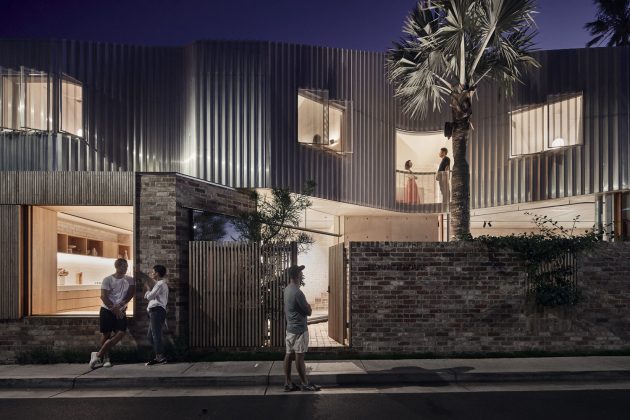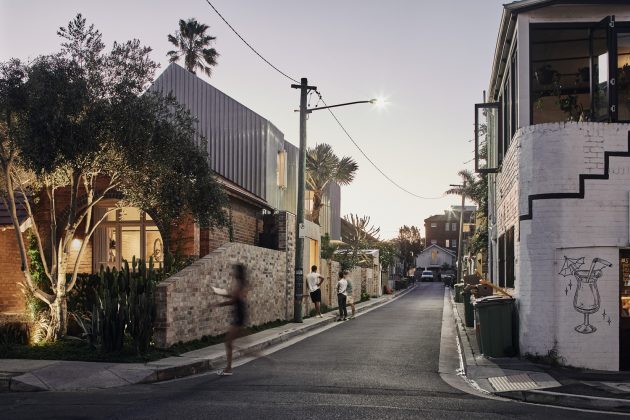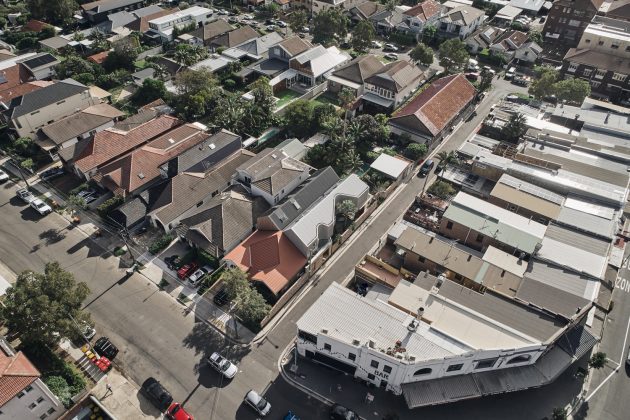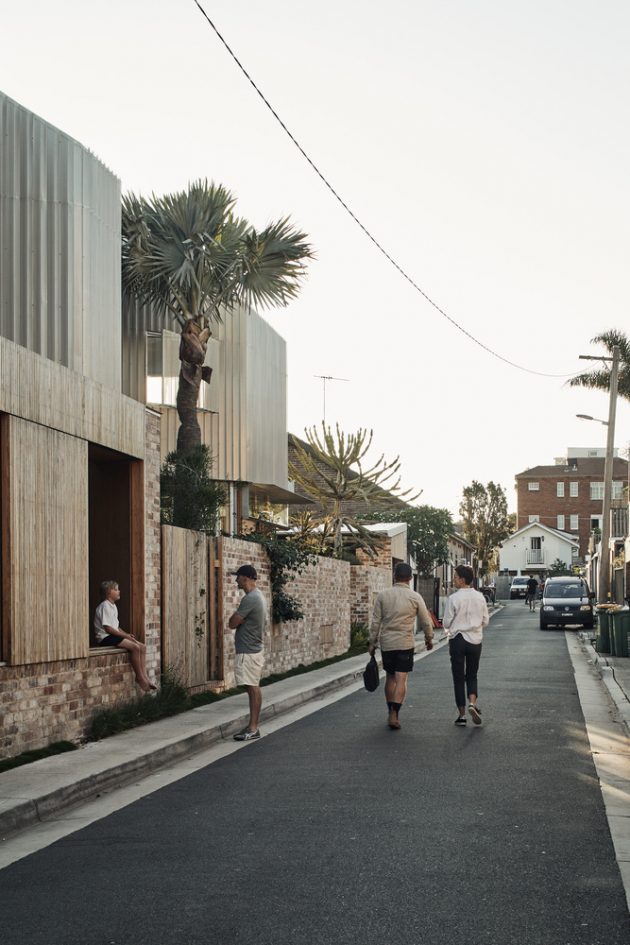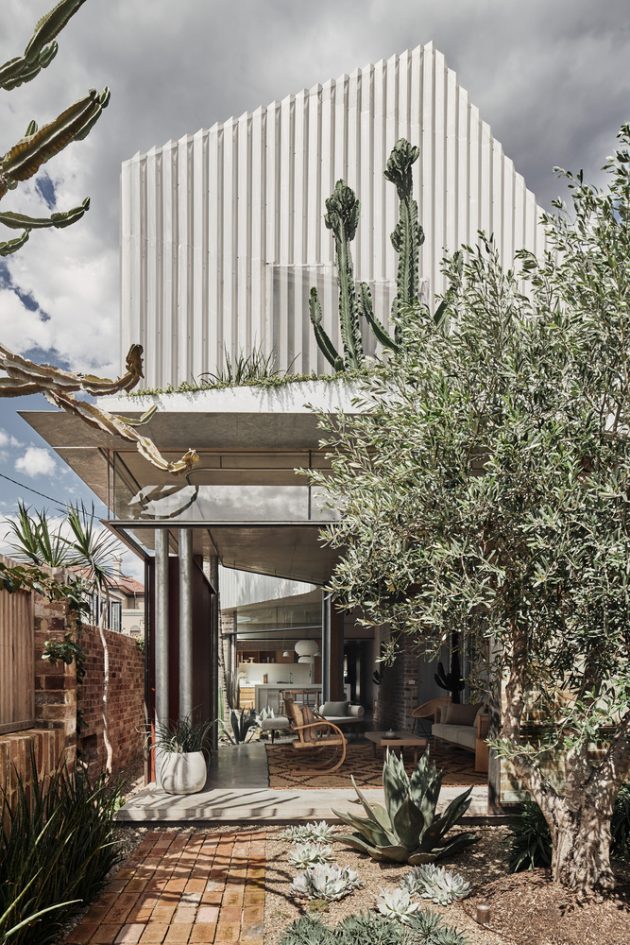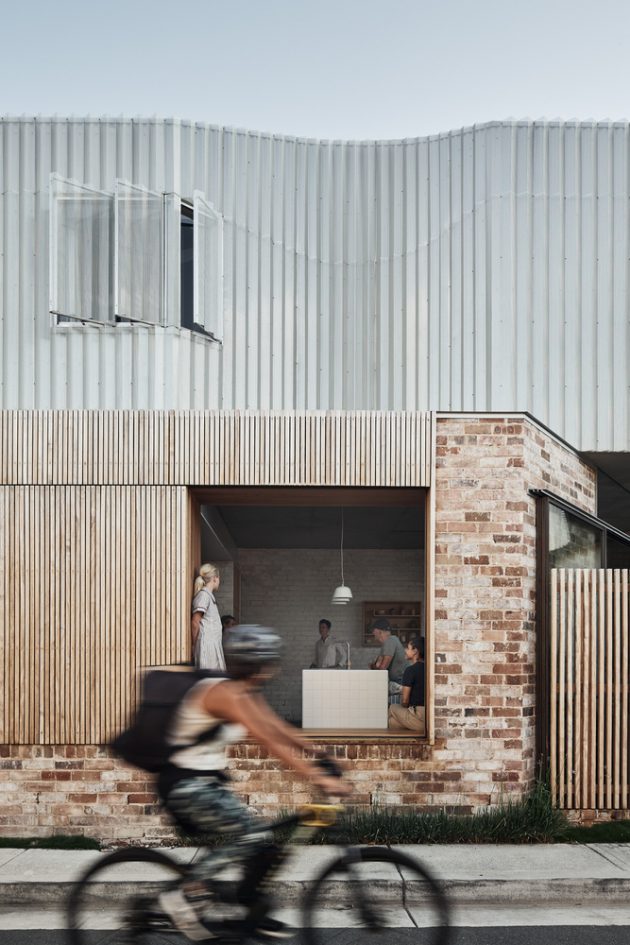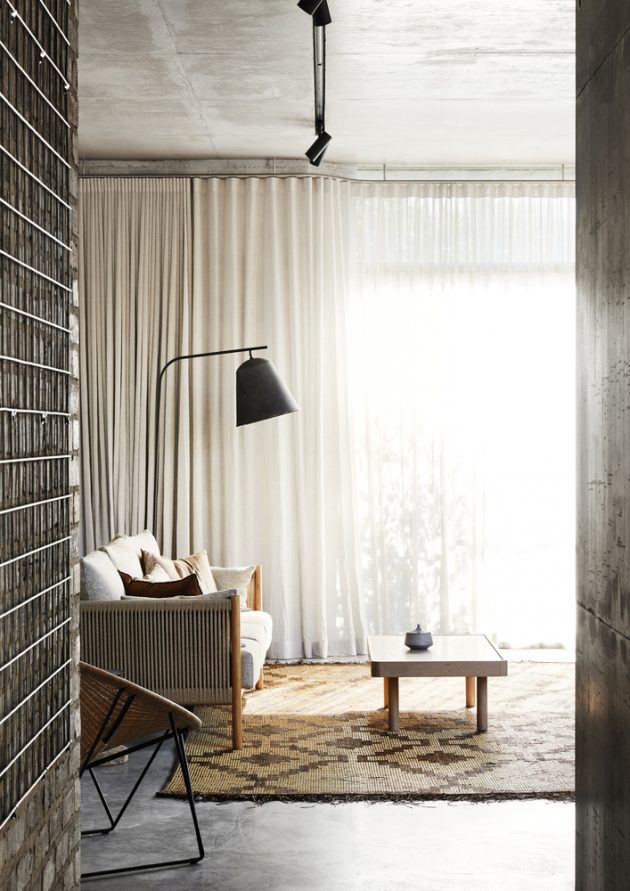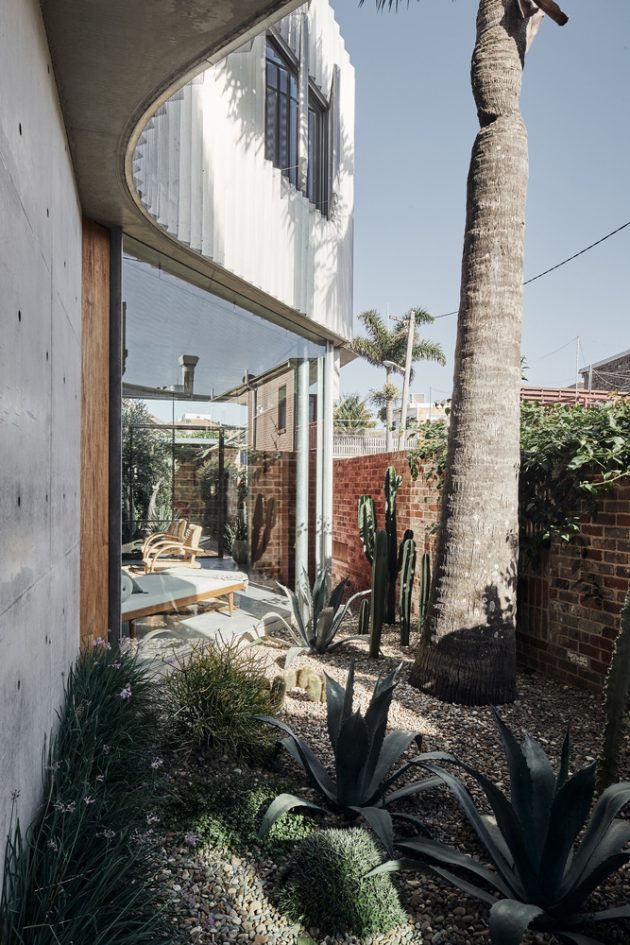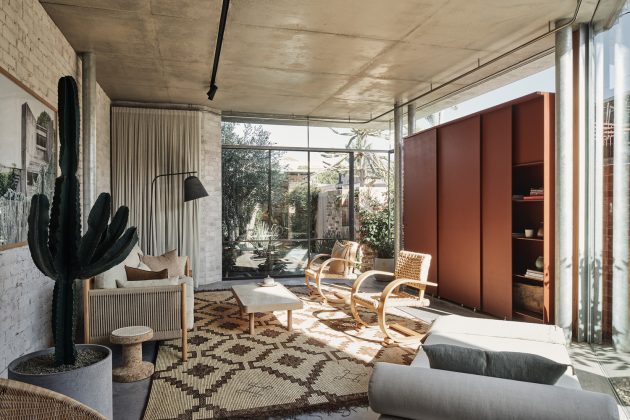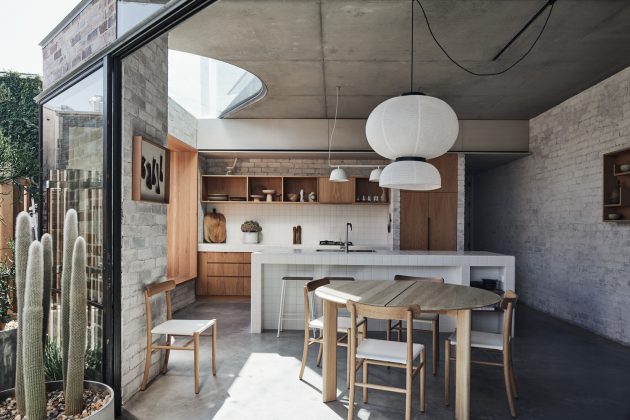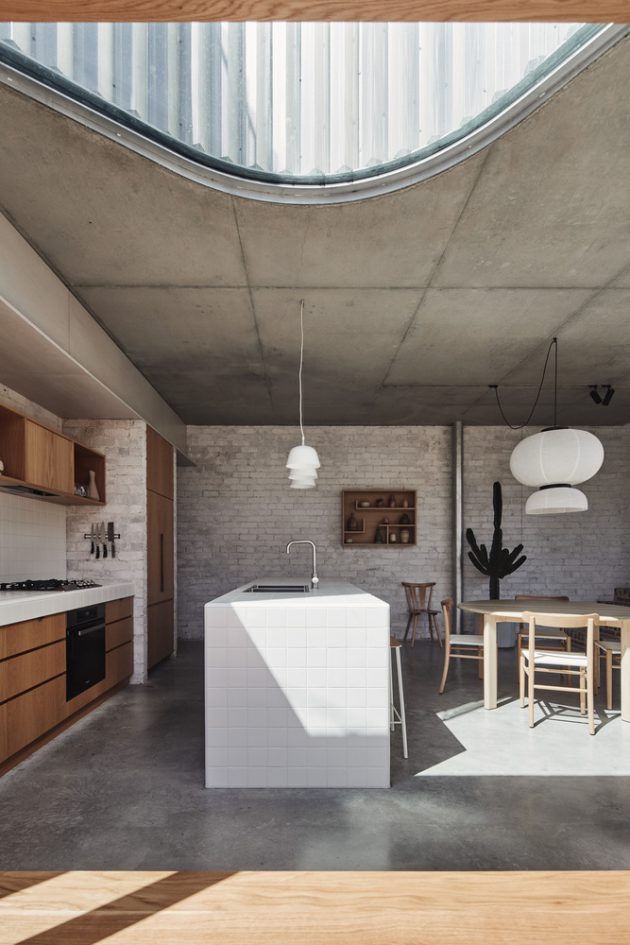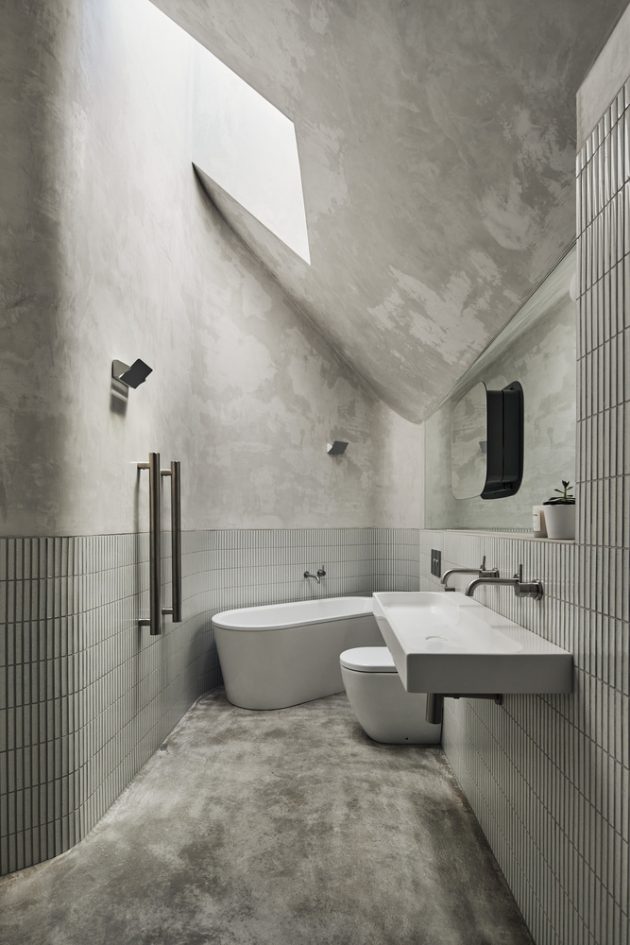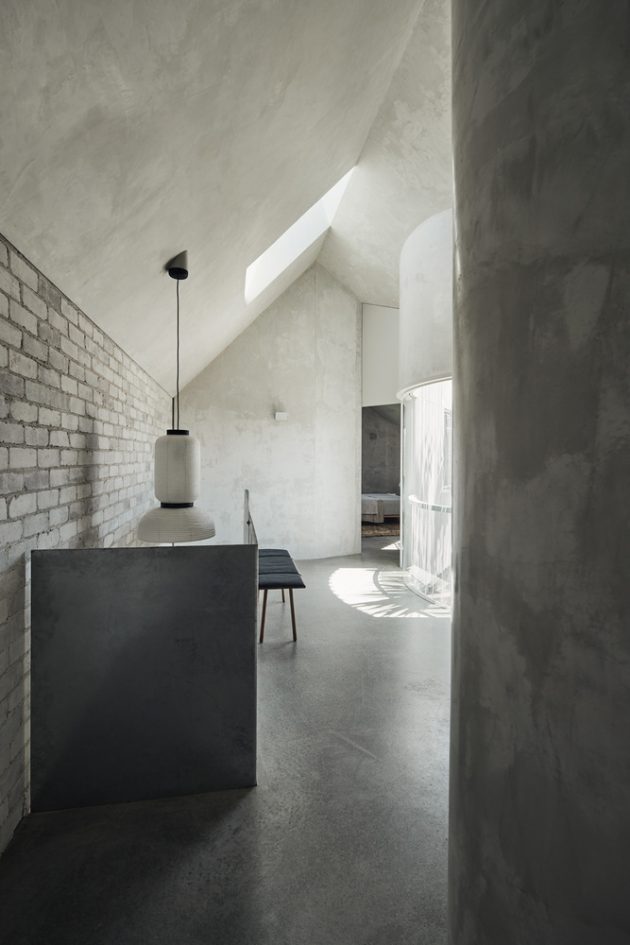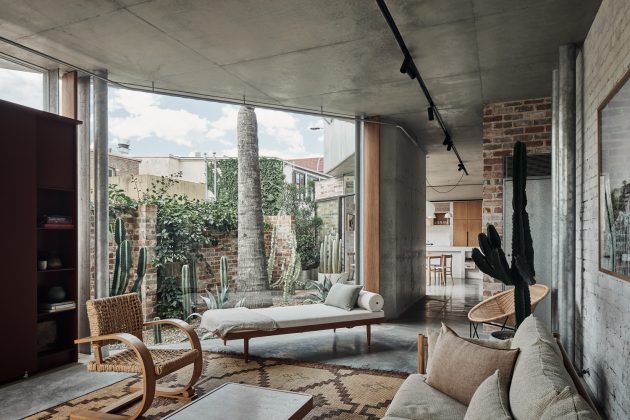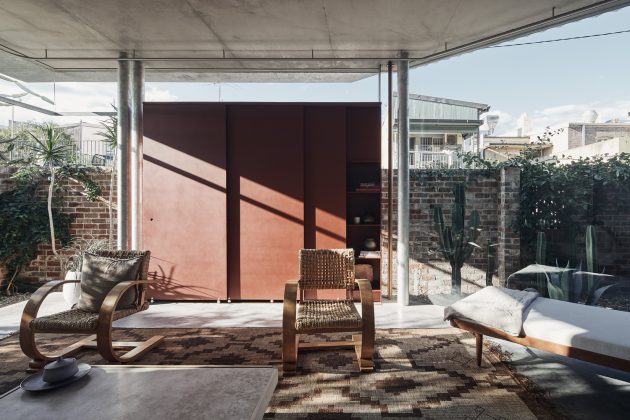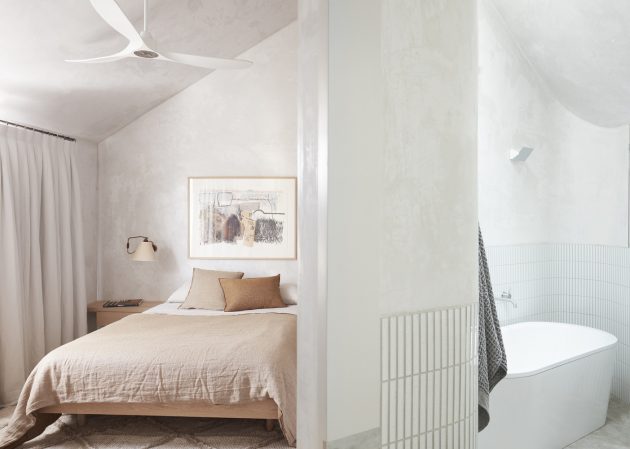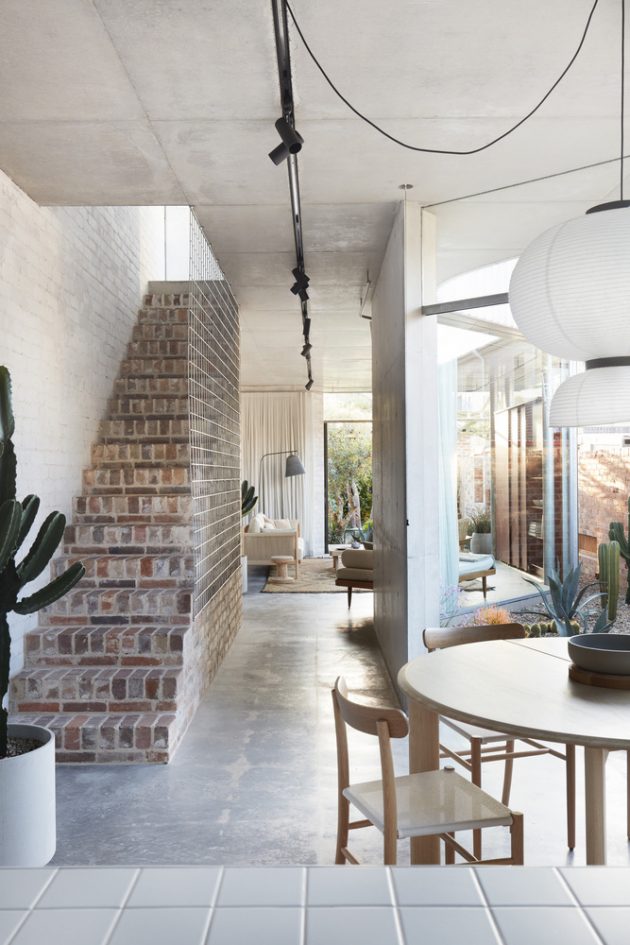Project: Bismarck House
Architects: Andrew Burges Architects
Location: Sydney, Australia
Area: 1,883 sf
Photographs by: Peter Bennetts
Bismarck House by Andrew Burges Architects
The Bismarck House is a luxurious modern dwelling located in Sydney, Australia. It was designed by Andrew Burges Architects and boasts with 1,883 square feet of modern living spaces. Its interior is masterfully crafted to include natural elements such as cacti that give it a very refreshing look and feel.
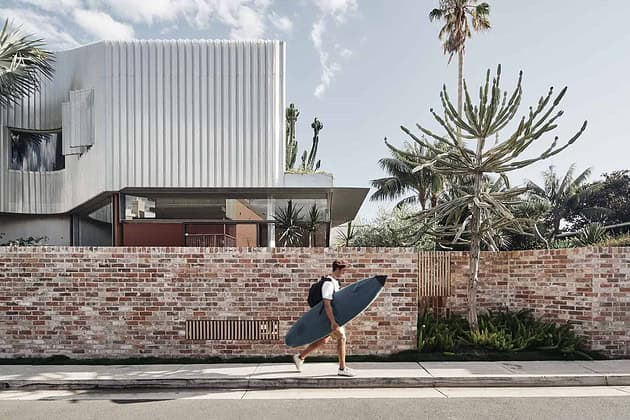
The Bismarck House is the younger sibling of a pair of semi-detached dwellings in Bondi. The design uses raw materials and sculpted spaces to integrate house and garden while orchestrating social interactions between the more public areas of the house and the laneway that runs along the semi’s northern boundary.
Our conceptual starting point for the project was to map the detailed context of the laneway: a long thin footprint immediately adjacent to the gritty rear-lane access for multiple commercial properties fronting onto Bondi Rd.
Into this context the ground floor of the house was conceived spatially and materially as a continuous garden between the boundary walls of the site. The brick common wall of the semi to the south was exposed and the new laneway edge to the north was rebuilt using bricks recycled from the site demolition. The garden is formed around key figures within the plan: the kitchen bench, a window seat to the lane, a concrete structural blade wall, a steel cabinet for storage.
The upper level, containing three bedrooms, is conceived as a solid mass that carves voids for light, creating diagonal and oblique viewing lines along the length of the laneway for the bedrooms, thereby moderating potential privacy loss from the rear facades across the laneway. These scoops of light allow the garden to be continuous along the majority of the site length, with the main scoop shaped around a new Bismarck Palm introduced as part of the garden works.
The house is an open, light filled, and flexible dwelling. It has been specifically designed to orchestrate many possibilities and uses, both functionally and socially, while showcasing our client’s capability in construction and landscape design. The house seeks to energize its laneway context, transforming the typical semi typology materially, formally, and socially through its response to the lane.
An over scaled kitchen window with a generous window seat opens directly onto the lane, encouraging conversations between occupants of the kitchen and the laneway – whether with the kids playing in the lane, or people passing by. The upper level of pleated aluminum scoops and curves to create a series of gardens running the length of the laneway, buffering the upper level rooms from the immediacy of the many neighbours across the lane.
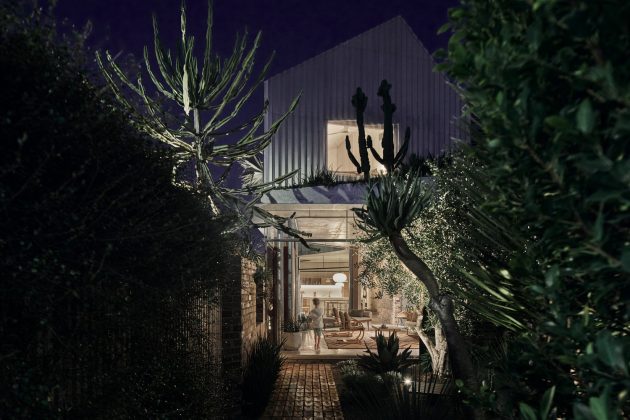
Our brief was to provide a flexible house that could be used as a holiday rental or as a future city house if our clients ever moved away. The house was also to be experimental and original in nature, showcasing Robert Plumb Projects’ building capacity, while also prioritizing the garden, to be designed by Will’s landscape company DBS, as an integral part of the house. The house is a very direct response to these functional and creative goals of our client’s brief.
William Dangar (landscape architect/client), brought Andrew Burges Architects, David Harrison & Karen McCartney (interior), and Robert Plumb Build together at the onset of the project. The material palette was honed through close collaboration between all, and with key trades: The pleated screen sits off an insulated, standard colorbond sheet wall, prototyped with the roofer to test window integration and transparency.
Custom designed, locally made pieces enrich each space: the living room primer-red steel storage unit/wall; bespoke steel doors integrate into raw concrete and brick reveals; crafted timber screens mediate laneway activity; bedroom shelves curve with fine rods tracing overhead.
Robust materials were chosen for longevity and their suitability for integrating energy efficient heating and cooling. The concrete floor slabs at ground and first levels are the final finished slabs and soffits. Each floor has hydronic heating coil cast in – a long view cost choice. Cost was a major factor, so a limited palette also framed the development of the interiors, supplemented with carefully selected vintage pieces involving many hours and hand selected items collected by David and Karen. We also liked that choosing vintage is a sustainable choice that gives a second life to existing pieces.
The site was chosen for its NE aspect, the proximity of infrastructure and the coast, and the potential for borrowing along the northern laneway. The internal footprint is restrained to enable a continuous garden running along and between rooms, while facilitating cross ventilation between interior and garden. Ventilators channel the NE breeze.
Garden courtyards provide privacy and shade, while folded steel awnings and screens protect the glass. The bricks are all recycled from the original structures on site. Each floor has hydronic heating coil cast into the slab: sustained heat in winter and a cool base in summer. Upstairs, the curved external walls are sheltered by a pleated, perforated screen forming permanent shade, (supplemented by the Bismarck palm canopy). The light scoops cut out of the floorplate allow the bedrooms to be oriented diagonally across the lane, and open the site to the north and north east.
The screen, and all the construction, were designed and fabricated through collaboration with local workshops. The garden is both beautiful and hardy. Species are native and/or succulent, with no lawn. It is an extremely low water-intensive green space, including the raised garden bed that shelters the main bedroom from the harshest westerly sun.

